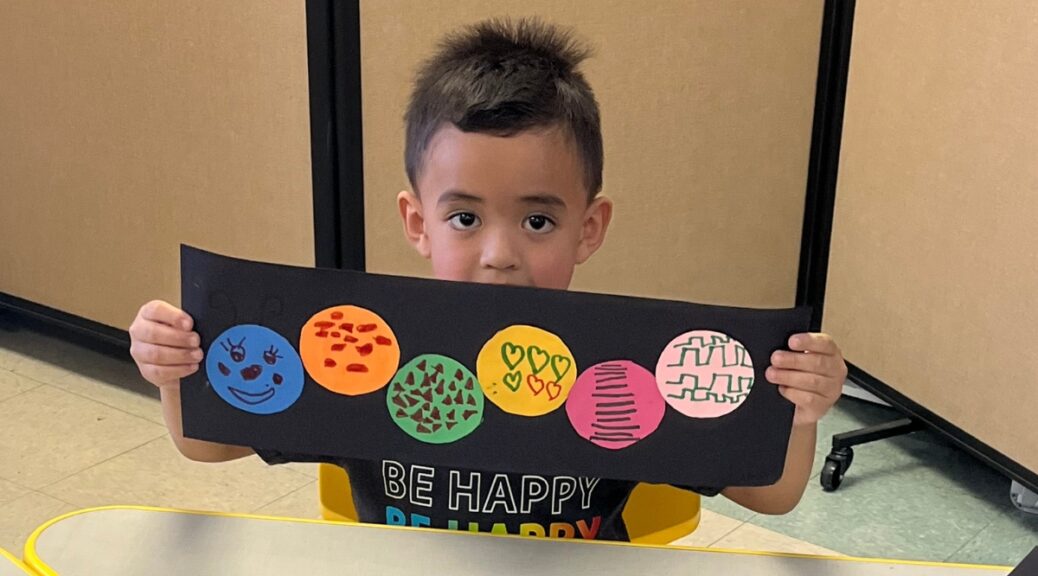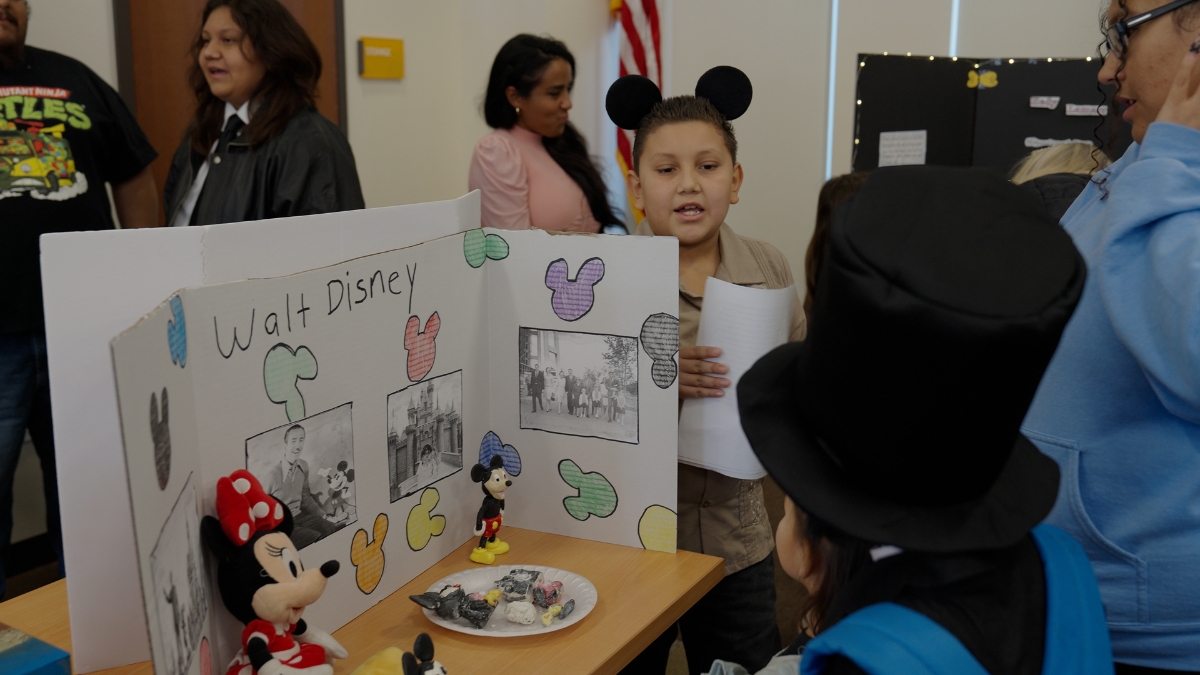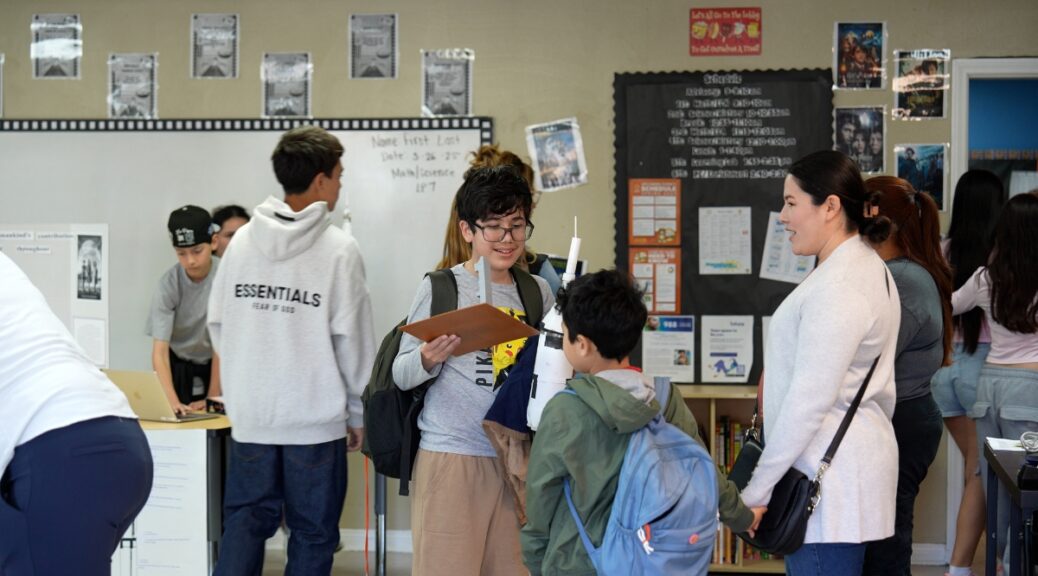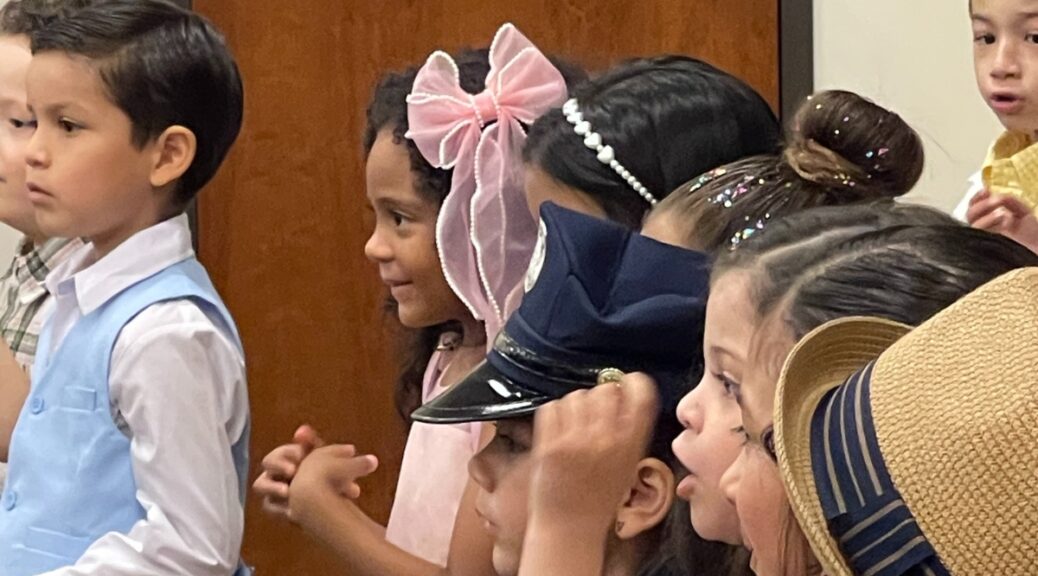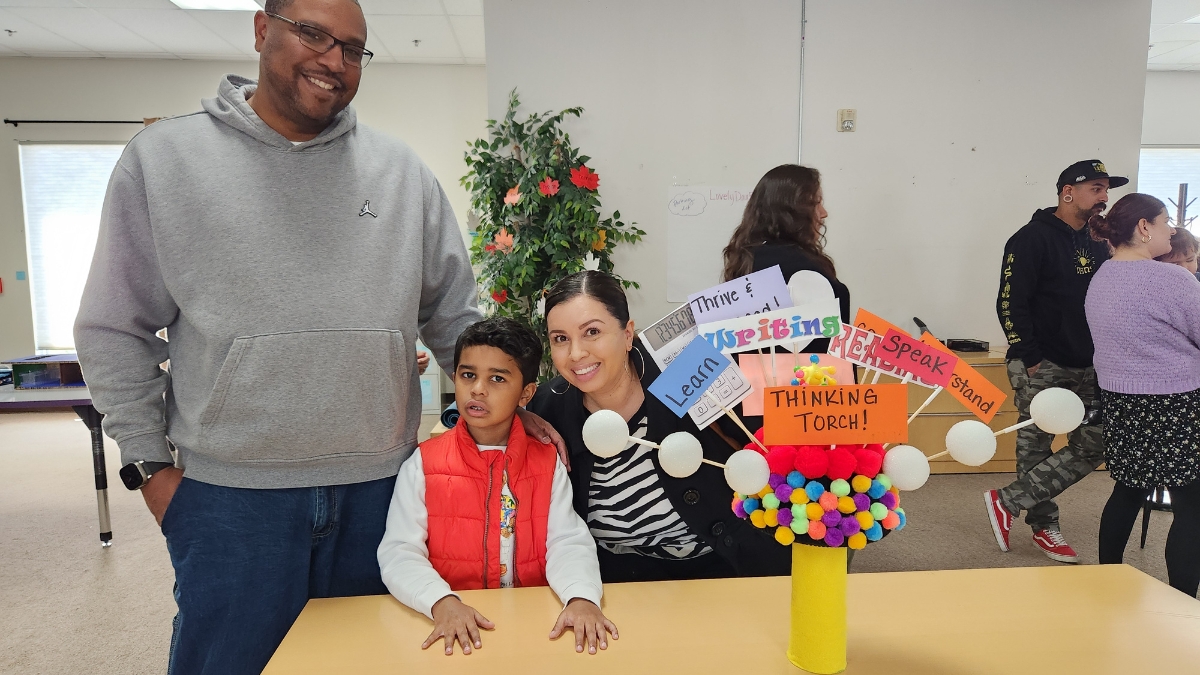At iLEAD AV Exploration, a TK-8 free public school in Lancaster, California, we believe education is about more than just memorizing facts. Our Learner Outcomes — our goals for iLEAD AV Studio learners — is that they will LEAD by becoming…
- Lifelong Learners
- Empathetic Citizens
- Authentic Individuals
- Design Thinkers
These outcomes shape learning at every stage of development at iLEAD AV Exploration, from our youngest explorers to our most experienced learners.
Let’s dive into what each of these outcomes truly means for an iLEAD AV Exploration learner.
Lifelong Learner: “I am a self-directed learner, focused on personal growth and development.”
In our rapidly changing world, it’s important to keep learning — in other words, to be lifelong learners. At iLEAD AV Exploration, we tap into kids’ wonder and curiosity to cultivate their love of learning for a lifetime.
What does this look like in practice? It means encouraging our youngest learners to explore and investigate new things. It means fostering an inspiring environment where learners of all ages take an active interest in learning. We encourage every learner to identify strengths and areas of growth, to persist through difficulties, and importantly, to see risks as opportunities to fail forward — because true learning isn’t about avoiding mistakes but about learning from them and growing stronger. Ultimately, our learners become adults who are eager to continue learning, both for professional and personal fulfillment.
Empathetic Citizen: “I seek to understand and appreciate what others are thinking, feeling, or experiencing.”
In order to thrive as a citizen of our world of diverse cultures, beliefs, and ways of thinking, it’s important to be an empathetic citizen. At iLEAD AV Exploration, we encourage our learners to seek to understand and appreciate what others are thinking, feeling, and experiencing.
Our learners embrace diverse cultures, beliefs, and perspectives, finding ways to make their community a better place through responsible action. We emphasize the importance of listening carefully, using kind words, and treating others with respect. By encouraging learners to work to understand what other people think, even if it’s different, we are cultivating individuals who can build bridges, foster collaboration, and contribute positively to both local and global communities.

Authentic Individual: “I am true to myself, my personality, values, beliefs, and principles.”
At iLEAD AV Exploration, we celebrate authentic individuality. We encourage learners to be true to themselves, their personalities, values, beliefs, and principles. We believe that when individuals can genuinely express who they are, they are empowered to make their greatest contributions.
We support authentic individuality by providing opportunities for learners to share their strengths to help others and to follow their dreams and passions. We foster an environment where learners can speak their thoughts and ideas in a healthy, respectful way, and where their actions match their words, beliefs, and values. We emphasize the importance of self-care, encouraging learners to take care of their minds, bodies, spirits, and hearts, because being authentic starts with nurturing oneself.
Design Thinker: “I am a creative, imaginative individual who explores original ideas, takes risks, and develops innovative solutions that I share with others.”
The challenges of our current and future world require creative, innovative solutions. To work toward our design thinker outcome, our iLEAD AV Exploration team works to inspire individuals who aren’t afraid to explore original ideas, take risks, and develop innovative solutions that they share with others.
We are focused on empowering learners to be problem-solvers. Through project-based learning, we give kids ongoing opportunities to use the design process to solve problems and create products. We encourage them to explore many different ideas and to think outside of the box. We also instill a mindset of continuous improvement, where learners seek to continually improve processes and products. We foster an entrepreneurial spirit, encouraging learners to think of ways to share their products or ideas with others. We also provide opportunities for kids to demonstrate what they learn through artistic expression.
The iLEAD AV Exploration Difference: Preparing for Life
Our Learner Outcomes are not isolated concepts but are interconnected pillars that support a comprehensive educational experience for each of our learners at iLEAD AV Exploration. By fostering Lifelong Learners, Empathetic Citizens, Authentic Individuals, and Design Thinkers, we are committed to developing individuals who are not only academically prepared but also socially conscious, emotionally intelligent, and capable of navigating and shaping the future of our world. This is the iLEAD AV Exploration difference – preparing learners not just for a test but for a fulfilling life.
About iLEAD AV Exploration:
iLEAD AV Exploration is a free public TK-8 school independent study program in Lancaster, CA, where flexibility meets robust support. Our credentialed educators empower each family’s journey with personalized guidance, award-winning curriculum, technology, vendor funds, engaging field trips, and the convenience of free drop-off workshops. Follow us on Instagram and Facebook, and find us at ileadav.org/av-exploration.
Join our caring school community today!



